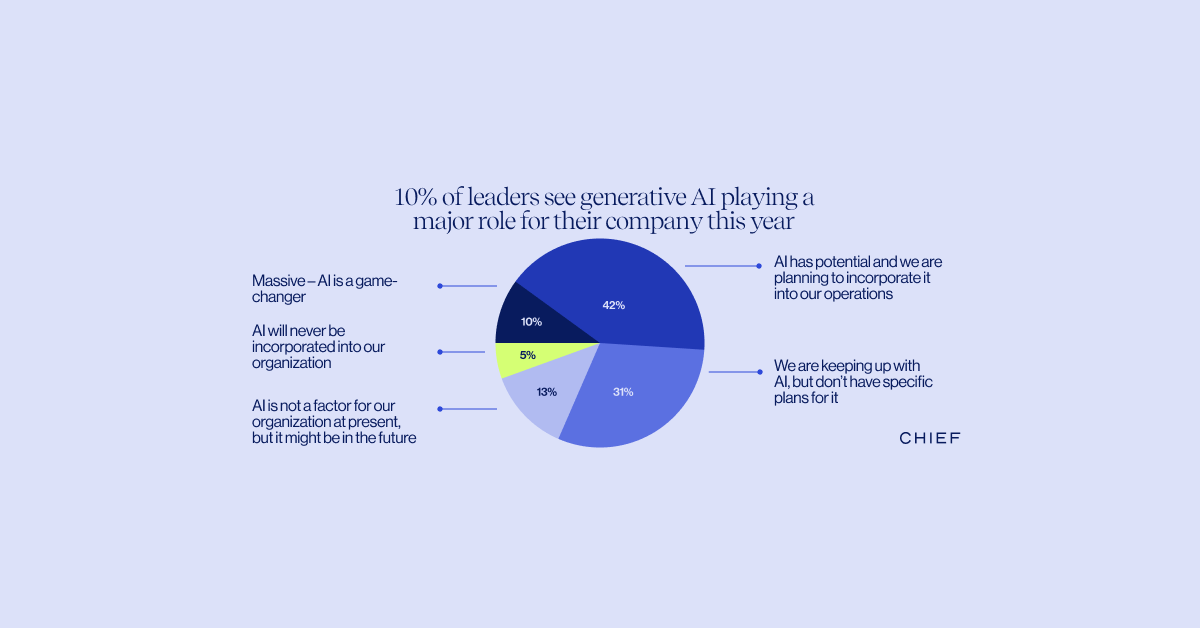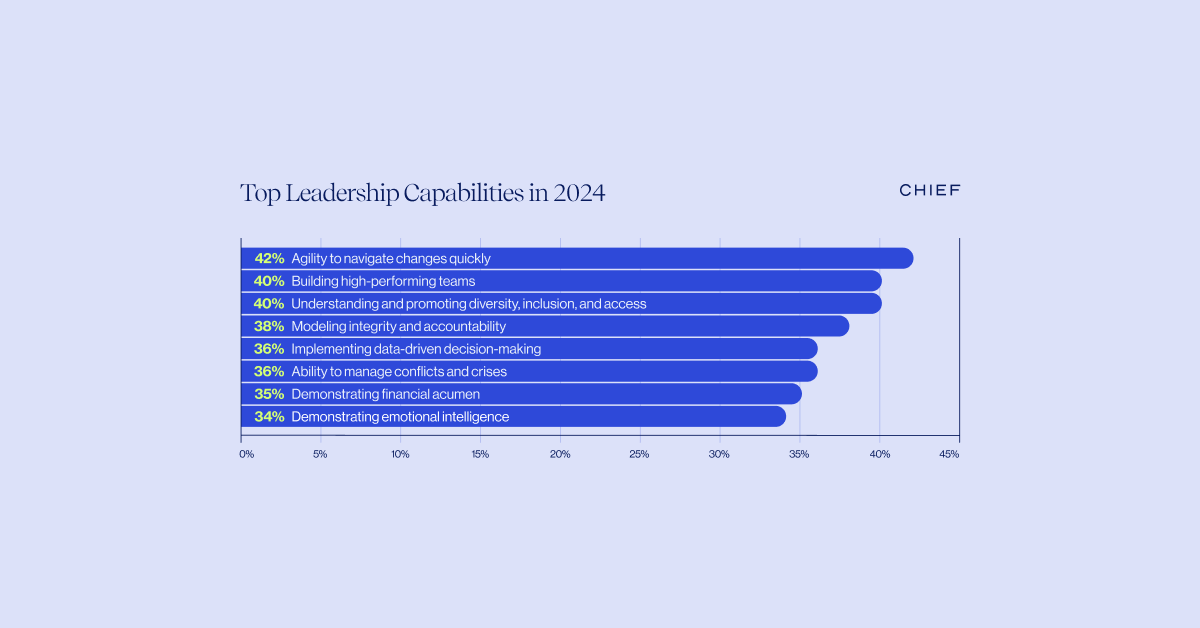From the aftermath of a global pandemic and its impact on the workplace, to rapidly changing stakeholder demands and the emergence of new technologies, it’s clear that today’s executives are facing unprecedented challenges in a fast-paced business world.
In fact, even after a rocky 2023 that included powerful labor campaigns and fears of an economic recession, more than half of executives say they believe leadership will be more challenging this year, according to Chief’s “The New Era of Leadership” report done in partnership with Wakefield Research.
In the survey of 600 C-Suite executives, 54% of CEOs said they expect leadership to be more challenging in 2024, with changing worker expectations, cybersecurity threats, talent retention, keeping up with AI, and maintaining productivity amid layoffs being the top challenges for their companies.

“If you look at even this decade, from 2020 to now, these are incredibly challenging times,” says Chief Member Cecilia Nelson-Hurt, Chief Diversity and Inclusion Officer at executive search firm Heidrick & Struggles. “There is no playbook, and we are building the parachute after we’ve jumped out of the plane.”
Nelson-Hurt says it comes as no surprise that one in three executives view changing worker expectations as a top leadership challenge, with the pandemic altering not only how and where we work, but also shifting the role employees want employers to play in caring about their well-being. That’s why, in a workforce that now consists of five generations with differing needs, Chief Member Cara Shortsleeve says it’s imperative that leaders are transparent about organizational expectations to ensure that they make the right hire. Currently, nearly one in three leaders say that identifying and training the right talent is a top challenge.
“Often, leaders say things like, ‘We can be super flexible,’ but then lo and behold, they can't,” says Shortsleeve, who serves as the CEO of The Leadership Consortium, a business consulting firm that helps organizations create better environments for leaders to thrive. “So the first thing we work with clients on is being candid about who they are and aren't. Leaders don't want to do that because they know it alienates some candidates and employees they're trying to please. But that transparency helps to educate both ways.”
For Chief Member Laura Maness, Global CEO at the advertising agency Grey, transparency has also been key for her and her team when it comes to maintaining a positive work culture amid an uncertain economy.
“A few ways we’re boosting morale and increasing productivity include communicating with radical transparency on a consistent basis and leveraging a shared framework which serves as the guiding principles and blueprint for how we run our company,” she says. “Sharing KPIs across all regions and checking progress at a regular cadence helps to keep employees focused and informed, reduces uncertainty, and builds trust. As Brené Brown reminds us, ‘Clear is kind. Unclear is unkind.’”
In today’s ever changing business landscape where budgets are tight, Shortsleeve suggests leaders move away from focusing on cash compensation and instead ramp up learning and development opportunities for staff, especially with the emergence of AI. Currently, 30% of executives view keeping up with technological advancements as a top organizational challenge, with 52% of leaders planning to ramp up their AI efforts this year.

“Employees are valuing growth opportunities much more than they have historically,” says Shortsleeve. “What you're seeing is the human psyche being like, ‘Oh my gosh, the world is changing around me, what can I control? Okay, what I can control is, ‘Have I thought differently about something? Have I explored these topics?’ Don't underestimate the value of learning, development and skill building programs to your employees.”
Honing the Leadership Capabilities Needed for Today
It’s true that focusing on learning opportunities for your team is a key way to foster a productive work environment. But in today’s unpredictable business climate, it’s far from the only way to create a healthy culture as employees and leaders alike need to be prepared for what’s ahead. That’s why more than 40% of executives say navigating changes quickly is a top leadership capability in 2024, followed by building a high-performing team and understanding and promoting diversity and inclusion.

“While leaders used to be able to make a decision at the beginning of the year and assess it at the end of the year, and then rinse and repeat, a lot of our clients are asking, Where are we? How's it going? Do we need to pivot? on a much faster cycle,” says Shortsleeve.
In addition to adapting and pivoting quickly, leaders are also struggling to balance empathetic leadership with the demands of a performance-driven culture. Nearly three in five executives say that taking decisive action for desired results is more important than demonstrating empathy and flexibility this year. Yet, 96% of executives believe that an effective leader must support employees in both their professional and personal lives.
“We always say to people, ‘Empathy doesn’t mean you tell me what you want, and I do it,’” says Shortsleeve. “Empathy means you tell me what you want, and I do the hard work to understand.” For executives, this means listening to the needs and concerns of your team and doing what you can to support them. If you can’t meet their needs, you must transparently communicate why.
“Humans perform to their highest potential in the presence of high standards and deep devotion,” says Shortsleeve, who emphasizes that employees appreciate when their leader shows that they care. This means asking, “What do you need? What tools don't you have access to? How can I support you? What does success look like? What can I take off your plate?” These questions, Shortsleeve says, “are all signals of devotion to someone’s success in a role.”
She explains that “in this environment where markets are tough, you need the remaining humans to perform to the very best they can.” That is why, she adds, “you need a mixture of setting really great goals for them while revealing that you are going to do what you can to position them for success in these new endeavors.”



